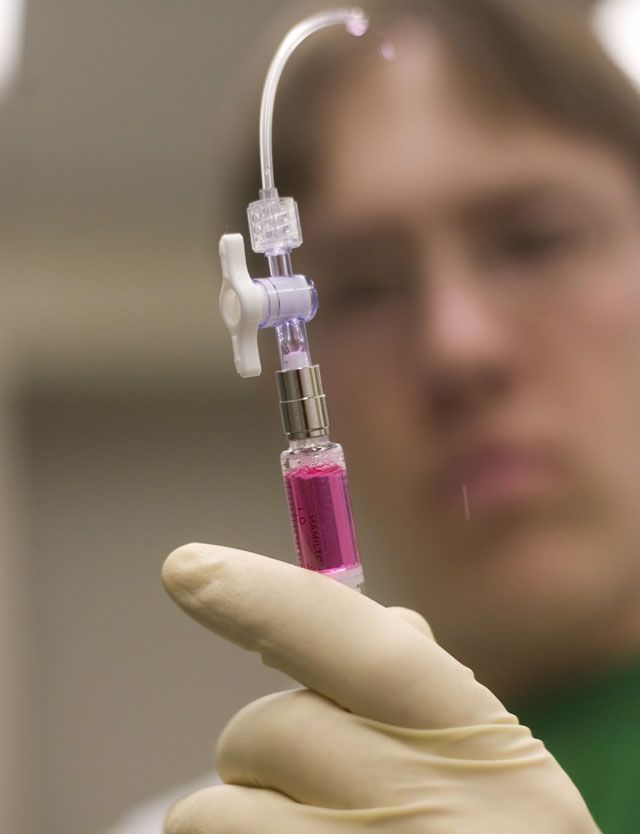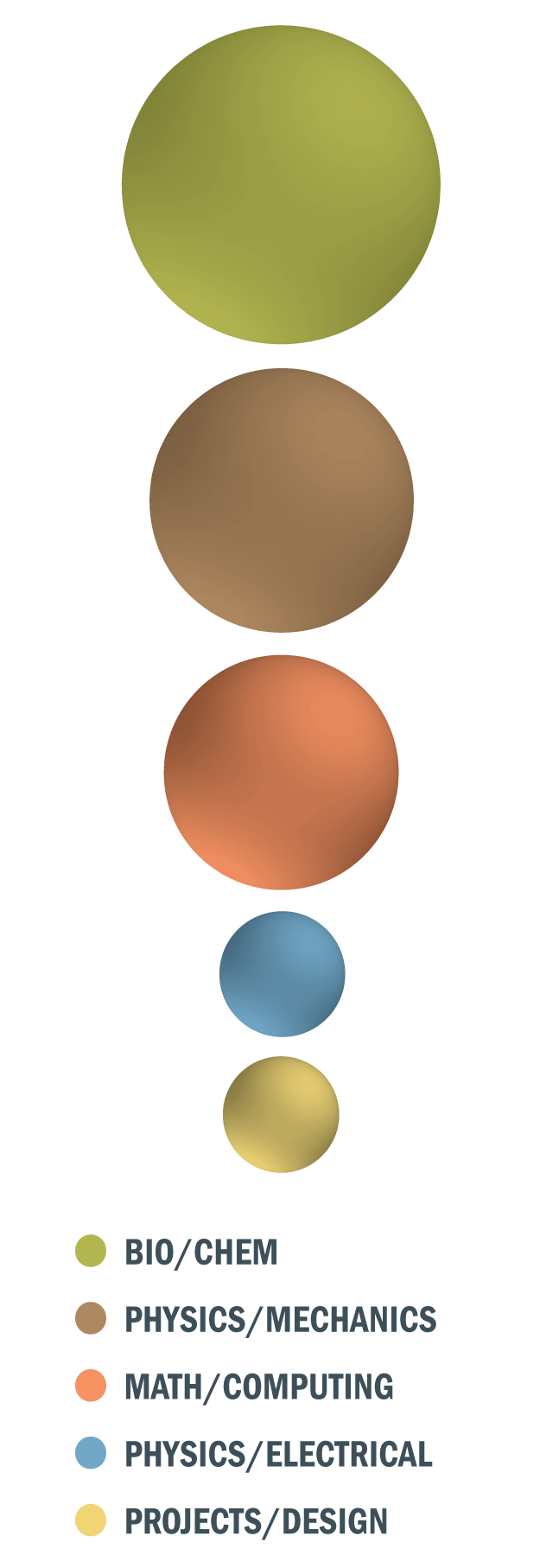If you're interested in working at the interface of engineering and the life sciences, study in this area will open your eyes to how biological systems work. You will develop advanced skills in experimentation, modeling and problem solving in this field. You'll learn how to apply your skills to design, synthesis, fabrication, instrumentation or any other engineering-related aspect of the healthcare, biopharmaceutical and biotech industries.
Focus Areas
Lehigh's programs examine cell and tissue engineering, biopharmaceutical engineering, and bioelectronics and photonics, from cells and tissue to organs and systems, in such subjects as:
- Biomechanics and behavioral neuroscience
- Cell biology, protein engineering, and drug synthesis and delivery
- Biosensors and biomaterials
- Medical and diagnostic devices, and biochips for DNA sequencing
- Laser- and fiber-based optical technology for biomedical applications
Another aspect of this field is the sophisticated processing and production necessary for pharmaceutical operations; Drug companies look to engineers to design, produce and refine products, and to answer key questions that dictate overall productivity and efficiency.
Lehigh engineering students in this concentration typically pursue degrees in bioengineering or in chemical, electrical or mechanical engineering, and work directly with courses, faculty, students and researchers from related science disciplines such as biology and chemistry. After graduating, many students pursue advanced degrees in related engineering research areas or enroll in medical school. Others bring their expertise to bear in a business setting, either in cutting-edge research and development or in management of biomedical or biopharmaceutical operations.
Research and Resources
Nowhere is Lehigh's culture of collaboration more evident than in its programs related to the life sciences and biotechnology. Expertise and facilities are shared freely across departments and disciplines, resulting in greater opportunities for students to identify and engage in aspects of the field that spark their interests. Projects take advantage of new state-of-the-art laboratories in biostructural mechanics, bioelectronics/biophotonics and biotechnology. These labs, and others, provide instrumentation to faculty research and student projects—everything from tissue culture incubators and microscopes with micromanipulation capabilities, to the latest in imaging hardware and software and data acquisition.
Examples of projects pursued by Lehigh engineers in this area include the following:
- Computational models of the human lung to help combat ventilator-induced lung injury (VILI), a phenomenon that severely complicates treatment of hospital patients being assisted by mechanical ventilators
- Artificial tissue through cellular engineering, for repairing of severely damaged skin
- "Microarrays" that allow genomics researchers to more efficiently identify and evaluate DNA sequences
- The design and fabrication of microelectromechanical systems (MEMs) that sense changes in a cell's electrical activity, leading to biomedical applications as well as potential in bioterrorism defense
- Development of bandage-sized sensors that monitor chemical levels in a patient's bloodstream and report the information to medical professionals via satellite communications
- Manipulation of carbon nanotubes (CNTs) by using DNA molecules to assist in sorting and placing the tubes, with enormous ramifications in nanoelectronics, medicine, biosensing and the strengthening of composite materials
Example Majors
- Bioengineering
- Biocomputational Engineering
- Chemical and Biomolecular Engineering
- Electrical Engineering
- Mechanical Engineering


